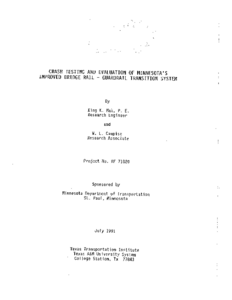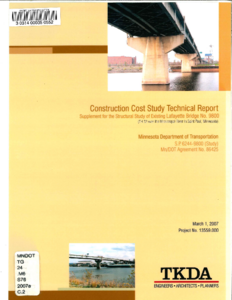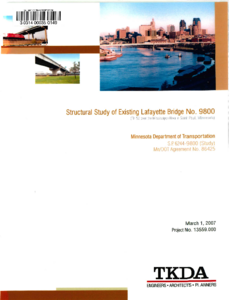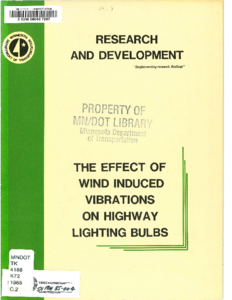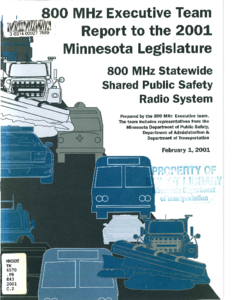The Effect of Wind Induced Vibrations on Highway Lighting Bulbs
Date Created
1985-07
Report Number
85-04
Description
800 MHz Executive Team Report to the 2001 Minnesota Legislature: 800 MHz Statewide Shared Public Safety Radio System
Creator
Date Created
2001-02
Description

